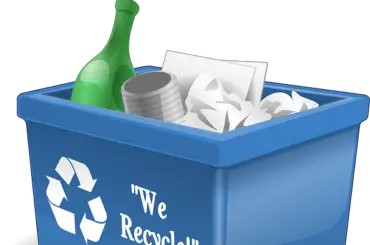Contents
Is Paper Biodegradable – Introduction

Paper, an integral part of our daily lives, is a versatile and ubiquitous material. Whether it’s used for reading, writing, packaging, or countless other applications, paper’s presence is undeniable. However, a pertinent question often arises: Is paper biodegradable? In this article, we’ll embark on a journey to explore the fascinating world of paper’s biodegradability, its profound environmental impact, and why it is rightfully considered one of nature’s recyclable materials.
Biodegradable and Non-Biodegradable waste | Waste Management | How to Recycle Waste: https://m.youtube.com/watch?v=YeVLBkypPRU&pp=ygUWSXMgUGFwZXIgQmlvZGVncmFkYWJsZQ%3D%3D
Understanding Biodegradability:
Before delving into the biodegradability of paper, it’s crucial to grasp the concept of biodegradation itself. Biodegradation is a natural process in which organic materials are broken down by microorganisms like bacteria, fungi, and enzymes into simpler substances such as water, carbon dioxide, and organic matter. This process allows materials to return to the environment in an eco-friendly manner, leaving behind minimal waste.
The Biodegradable Nature of Paper:
Indeed, paper is intrinsically biodegradable, which is a remarkable characteristic and one of its significant environmental advantages. The biodegradation of paper unfolds through a natural progression when paper waste is exposed to environmental elements, including moisture, oxygen, and a consortium of microorganisms.
Here’s a simplified breakdown of the biodegradation process of paper:
- Microbial Activity: Upon disposal in the environment, paper waste becomes a hospitable habitat for a range of microorganisms, including bacteria and fungi.
- Enzymatic Digestion: These microorganisms unleash a repertoire of enzymes that initiate the breakdown of the complex cellulose fibers found in paper into more straightforward compounds.
- Gradual Decomposition: Over time, the action of microbial digestion causes paper to gradually decompose into organic matter, carbon dioxide, and water. The pace of this process varies depending on environmental factors.
- Return to Nature: The end result of paper biodegradation includes enriched soil through the addition of organic matter, the release of carbon dioxide (which can be reabsorbed by plants during photosynthesis), and the recycling of water back into the environment. This seamless cycle is an elegant testament to nature’s ability to reclaim and recycle its resources.
Environmental Benefits of Paper’s Biodegradability:
The biodegradability of paper offers several compelling environmental benefits:
- Reduced Landfill Waste: By decomposing naturally, paper significantly reduces the volume of waste in landfills, mitigating the detrimental environmental impacts associated with overflowing landfills.
- Carbon Sequestration: As paper decomposes, it releases carbon dioxide, which can be absorbed by plants during photosynthesis. This process contributes to carbon sequestration and plays a role in mitigating climate change.
- Soil Enrichment: The organic matter resulting from paper biodegradation enriches soil, enhancing its fertility and overall health. This is particularly beneficial for agriculture and gardening.
- Renewable Resource: It’s worth noting that paper is primarily crafted from renewable resources, notably wood pulp sourced from sustainably managed forests. This eco-conscious approach underscores paper’s status as an environmentally friendly choice.
Challenges and Considerations:
While paper’s biodegradability is a compelling feature, a few considerations merit attention:
- Ink and Coatings: Some paper products may contain inks, coatings, or additives that can impact their biodegradability. Choosing paper with eco-friendly inks and coatings can mitigate this concern.
- Recycling: Recycling paper is an alternative sustainable option. Recycling extends the lifespan of paper products, reduces the need for new paper production, conserves energy, and minimizes resource consumption.
- Responsible Disposal: Littered paper, when not disposed of properly, may not biodegrade as efficiently in uncontrolled environments. This can have adverse environmental consequences, emphasizing the importance of responsible disposal practices.

Conclusion:
In conclusion, paper’s biodegradability is a testament to its remarkable environmental adaptability and eco-friendliness. Its innate ability to return to nature as harmless components underscores its role as a sustainable choice for a wide array of applications, from packaging to printed materials. However, to maximize the environmental benefits of paper and minimize its impact on nature, it’s imperative to consider factors such as ink and coatings and to promote responsible recycling and disposal practices. By doing so, we can harness the biodegradable properties of paper to contribute positively to our environment and reduce our ecological footprint. In the grand symphony of nature, paper plays a harmonious role as one of Earth’s recyclable materials, perpetuating the cycle of life and sustainability.
In conclusion, the biodegradability of paper is a remarkable quality that aligns perfectly with environmentally conscious practices. Paper’s ability to naturally break down into harmless components through the collaborative efforts of microorganisms, moisture, and oxygen is a testament to the sustainability of this age-old material.
This biodegradability not only reduces the burden of waste in landfills but also contributes to carbon sequestration, soil enrichment, and the responsible management of renewable resources. However, it’s essential to remain mindful of factors like inks and coatings in paper products and to embrace recycling and responsible disposal practices to fully harness the environmental benefits of paper.
As we contemplate our choices in a world increasingly focused on sustainability, paper stands as a symbol of nature’s resilience and adaptability. It’s a reminder that even in our modern age, we can find harmony with the environment through materials that seamlessly integrate into the natural cycle of life. By embracing the biodegradable nature of paper, we can reduce our ecological footprint and foster a more sustainable and eco-conscious future.
More Links:
Amazing Facts You Must Know About Digital Google Calendar Display 2023: https://ecosustainity.com/digital-google-calendar-display/
What Are the Benefits of Smart Living? 9 Fabulous Advantages in 2023: https://ecosustainity.com/what-are-the-benefits-of-smart-living-9/





